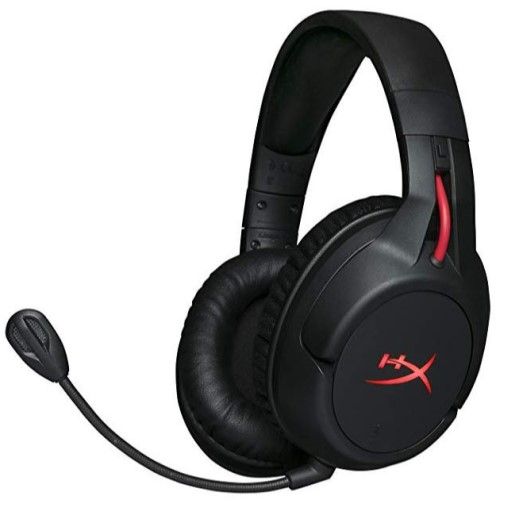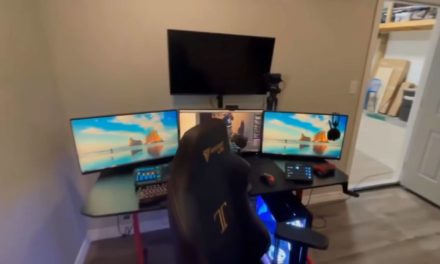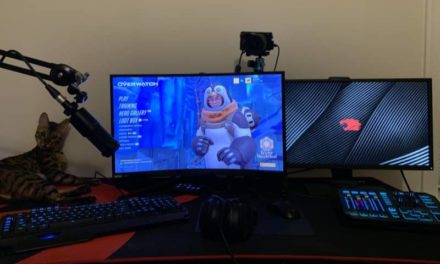Shroud is a retired Canadian pro Counter-Strike: Global Offensive player who first made his first real mark in the gaming world when he joined compLexity Gaming’s roster as a substitute in 2014. After a month, he became a full-fledged member, and has stuck with the organization both through their rebranding as Cloud9 and his retirement from pro-gaming and into his transition to full-time streaming. However, he hasn’t lost his edge and is still renowned for his excellent sniping skills, and is often used as a reference of comparison for other highly skilled players, including Danucd, who was often referred to as the ‘female Shroud’ when she first became noticed in PlayerUnknown’s Underground. We’ve put together a detailed guide to Shroud’s gaming setup.
Shroud’s Monitor
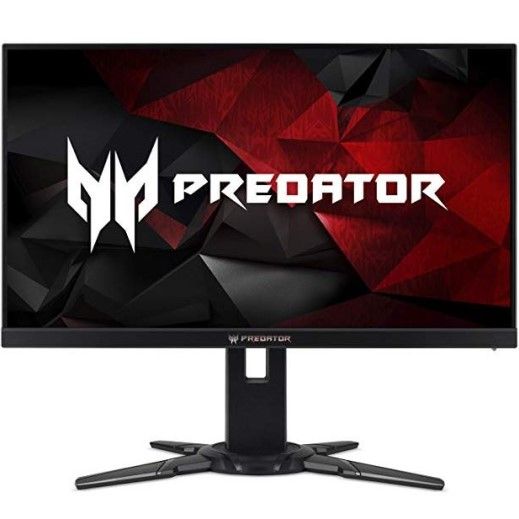
Shroud uses the ACER Predator XB252Q 24.5-INCH.
This monitor incorporates NVIDIA G-SYNC technology to reduce instances of screen tearing, combined with Ultra Low Motion Blur technology to ensure that all in-game movements remain smooth, sharp and clear.
When it comes to monitors, it’s really all about the screen size and pixel resolution. Most streamers seem to be sticking with a 24” option, albeit two or three or them. However, while the lower resolution monitors may be cheaper, it does greatly impact gameplay. This is because the number of pixels such as 1080 × 1920 may look sharp on a 24” screen, the same resolution would be stretched on a 27”, thereby making the pixels larger and more noticeable.
The inverse is also important, as it can have the opposite effect of shrinking the display tabs to compensate for extra pixels. Therefore, it’s important to get a monitor with a balanced resolution rather than a bigger screen on a budget or one with unnecessary features. Of course, input, response and refresh rates, are also important features to consider.
Individual needs will obviously differ based on the types of games that the purchaser would like to play, as a gamer who prefers card and puzzle video games will obviously have less of a need for 1 – 2 millisecond response time than a competitive fps player would. So, bear these points in mind if you’re considering buying a new gaming monitor.
Shroud’s Mouse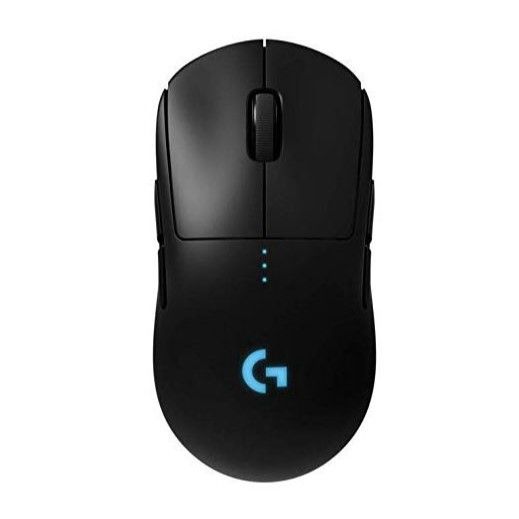
Shroud uses the Logitech G Pro (Wireless)
This mouse was designed specifically for gamers and is among the most widely-used among both gaming and streaming pros, although it is often sponsored by Logitech.
Aside from the Dots Per Inch (DPI) superiority that will impact sensitivity, one of the main advantages of using a gaming mouse over a regular mouse are the hot-key shortcut buttons that are integrated into the gaming mice.
Of course, it’s important for gamers to be realistic about whether they actually need all of the extra buttons as the number of buttons and other extra features generally impacts the price.
Other considerations include the comfort in handling the mouse, such as weight preferences and differences in hand size, shape and grip.
This is why many high-end mice are customizable with weights and removable parts. Gaming mice are also designed to have little to no cursor input latency and are far more durable than regular mice. This is important considering the amount of mashing that gamers generally inflict on their mice.
Shroud’s Mousepad
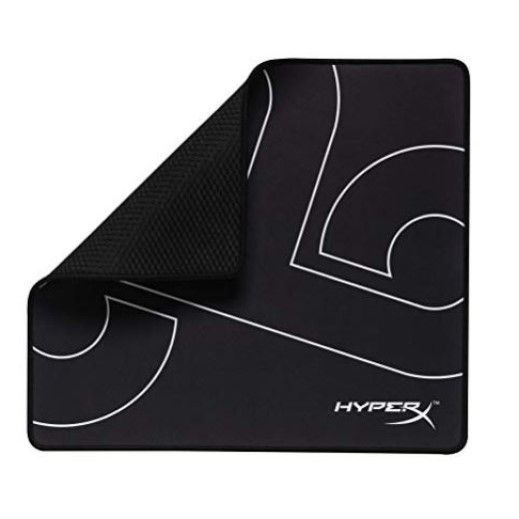
Shroud uses the Hyperx Fury S Speed – Cloud 9 Limited Edition Mousepad
This is a limited edition version of HyperX’s Fury S Speed mousepad. It’s rubber textured underside ensure that it remains secure during gameplay, while its fabric’s density allows for optical mice. to track accurately.
Gamers need precise, fast and forceful movements compared to regular PC users, which necessitates mousepads. Not doing so could result in their desks being worn down by the constant scraping, the debris this causes could also damage their mouse. Furthermore, the dirt and oil on the desk would also wear down the feet off the mouse and can also occasionally interfere with the optical sensor if the surface is reflective or has a pattern with contrasting colors.
While mice with laser sensors don’t have this problem, they generally have lower sensitivity and accuracy than optical ones. However, every gamer has their own preferences. Other considerations include the width of the mousepad.
While a regular-sized mousepad might be ok for less intensive gaming such as card games or MOBAs, wider mousepads are preferable for FPS gamers, as they allow space for the wider movements required when gamers using lower DPI settings on their mouse.
Shroud’s Keyboard
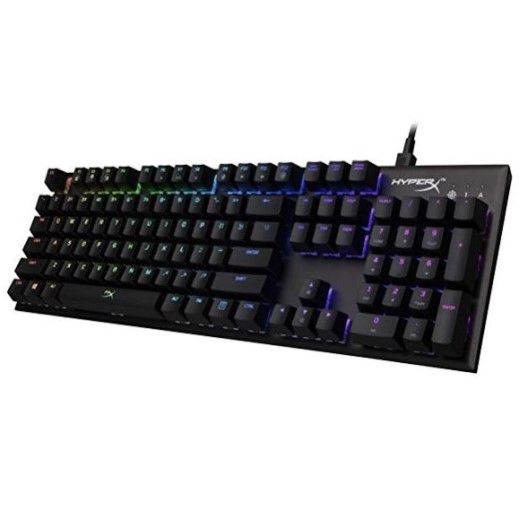
Shroud uses the HyperX Alloy FPS RGB Keyboard
This mechanical gaming keyboard utilizes Silver Speed Switches, as well as dynamic RGB lit keys.
While some might feel that buying a special keyboard for gaming is less important than buying a gaming mouse, most gamers will tell you that there are many advantages in having one for certain types of gaming. For instance, different mechanical keyboards will have varying actuation forces.
This means that they require more or less pressure to register input, which can save gamers milliseconds per stroke. However, other gamers might prefer heavier keys, as the input is easier to control. Wrist fatigue is also a consideration for long-term gaming.
Tactile feedback is also important to some gamers, as they would either prefer input feedback or no feedback, depending on the game that they are playing. All of these factors are influenced by the types of switches used in the keyboard. These switches are what connect the key to the keyboard.
Shroud’s Headset
Shroud Uses HyperX Cloud Flight Headset
This wireless headset comes with a detachable noise-cancelling microphone and has a battery life of up to 30 hours.
As far as headsets go, streamers and gamers alike are split between whether it’s worth buying specialized gaming headsets over regular headsets. For gamers, the main concern seems to be whether the headset comes with a mic or not.
While streamers might care about superior voice quality, gamers are generally ok with graininess, as long as their teammates can hear them. This is why many streamers use a desktop or add-on microphone that is less likely to pick up unwanted sounds.
For both though, especially if they are playing claims such as FPS or RPG games that are heavily dependent on audio, immersive realism is what’s most important. Basically, what they care about is whether the virtual sounds in the game are realistically describing the scenario that they’re in, such as how distant a gunshot or another character’s footprints are, relative to their own character.
Shroud’s Microphone
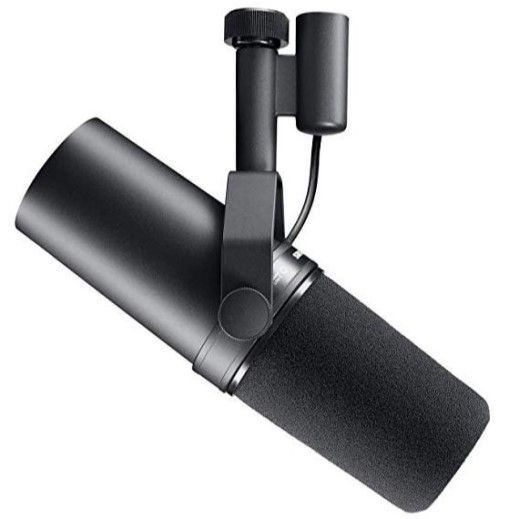
Shroud Uses the Shure SM7B Microphone
This air-suspended dynamic microphone is capable of shielding against background noise and electrical interference, while the pop-filter prevents against unwanted breathing effects from close talking.
Audio quality is obviously a crucial factor when streaming, as regardless of whether you’re choosing to stream with or without a facecam, people are still going to want to hear you. As far as quality goes, many experts will say that it’s best to not spend too much on your initial investment until you see whether you actually enjoy streaming and whether you attract enough viewers to justify the expenses. That’s why many streamers who are starting out initially stick to using their headset mics, although there are some pros who use them as well. Those with a good reputation include the Astros A40s.
Of course, they don’t compare to a dedicated microphone, so you’ll probably want to upgrade your setup once you’ve decided to take streaming more seriously. Most broadcasters will recommend a USB microphone, as they usually come with their own inbuilt processing drivers and hardware, including a pre-amp and analogue to digital converter. They also usually don’t require additional sound cards.
This is important, as while all motherboards are built with pre-amps and audio-convertors built into them, but they are usually not of the highest quality, which is why many streamers will buy a higher quality pre-amp and/or mixer to improve to sound quality. It is worth noting, that all equipment should be of the same quality, as all of the equipment will peak at that of the lowest quality product in the audio chain. It’s therefore significant when microphones have the major elements integrated into a single interface.
Shroud’s Chair
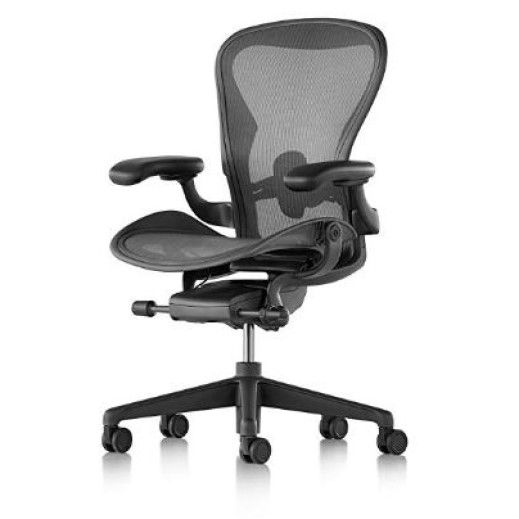
Shroud Uses the Herman Miller Aeron Chair Graphite
Chairs are generally a matter of personal taste, and in the case of streamers, are often sponsored. When picking a chair, it is therefore important to consider your own personal needs, such as the weight it can support, height requirements, adjustability, armrests and durability. Comfort is obviously what should be your main consideration before buying a chair, as it’s where you’re going to be spending most of your time.
Therefore, no matter how cool a chair may look, it may not be the best fit for your body’s requirements. The best way to assess the best type of chair for you, is to try out the different chairs in a brick-and-mortar store to see which specs and designs best suit you. If those match up with the chair that your favorite pro-gamer or streamer uses, then go for it.
Shroud’s Webcam

Shroud Uses Sony A6000 Webcam
This camera boasts an extremely fastauto focus6 rate and 24.3MP resolution capabilities. It is also lightweight and compact, with WiFi data transfer options, making it possible to upload content onto your mobile device while on-the-go.
Whether to use DSLR (regular cameras) versus actual webcams is a matter of debate among broadcasters for a number of reasons. A major factor of course, is what you want to record and the style of videos that you want to create. Outdoor vlogs vs indoor gaming or chatting streams have different minimum requirements, as portability, light sensitivity and motion capture needs are different. Where gaming is the main focus, with few IRL interactions with chat, it may not even be worth considering a fancier camera, as it won’t really affect the overall quality of your stream.
One a basic level, webcams are far cheaper and intuitive than regular cameras and require far less tweaking and extra parts in order to get them working. They are also usually enabled with autofocus features that ensure that your will never get blurry while you’re moving around.
As the resolution quality is generally lower than that of regular cameras, the files produced by webcams are smaller and easier for your PCs to process and upload without the use of a fancier CPU to keep up with the flow of hi-res files. However, the recommended lowest pixels for decent-quality recording is 1080p.
The pixel rates of regular cameras are usually higher and capable of handling lower lighting. They are also portable, unlike webcams that require PCs. They also have a fixed bitrate, so audio-syncing shouldn’t be an issue. But, many of them do not allow for adding on external voice-recording devices, which could add on extra editing work later on anyway.
They do require additional hardware to connect the camera to the PC, as well as software to process it live. So, while the quality is definitely higher, it may not be necessary for smaller home-streamers. Another concern are the recording limits that regular cameras have. Camcorders are far more reliable in this regard and also have more zoom capabilities, but they don’t have the flexibility of buying lenses.
Basically, to get all of the features that you want will require a budget to match. So, a real video recorder would probably only be recommended to a YouTuber or live-streamer with an established following, or for someone who wants to make IRL streams the main focus of their channel.



